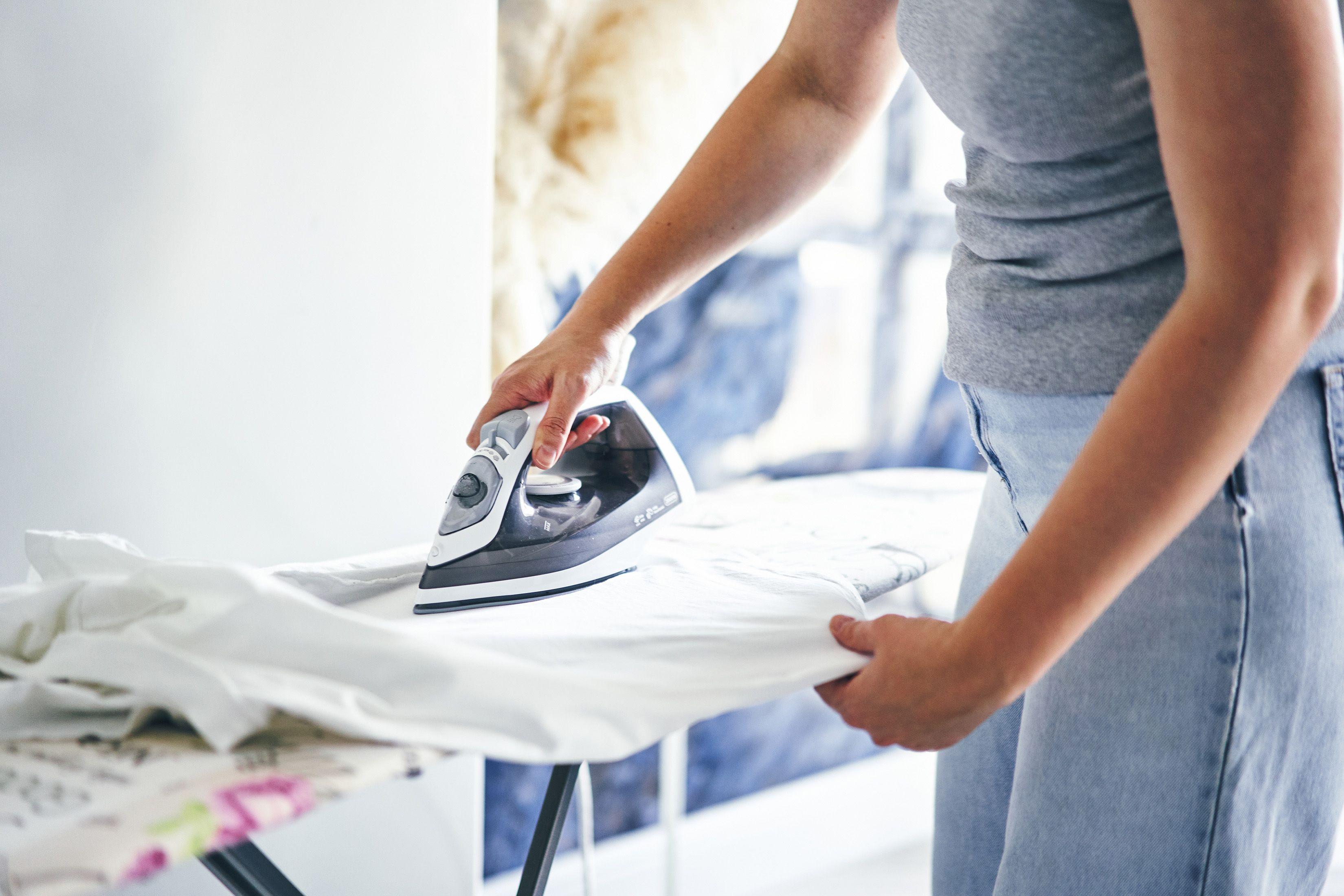Whether you enjoy the act of ironing or would prefer to run a steamer over your clothes, some pieces just need to be ironed the old-fashioned way to remove stubborn wrinkles. No matter how frequently you use the iron, you might have made a few mistakes while performing the chore. Whether you've left a burn mark on your favorite shirt because you didn't check the material setting on the iron, or your pressed linens just won't flatten, there are several common ironing mistakes you could be making. (And some of them are mistakes you might not even realize you're making!)
To save you from future mistakes, we turned to the experts. Here are the most common mistakes and misconceptions about ironing, and what you should be doing instead to preserve your favorite pieces.
To save you from future mistakes, we asked Kim Romine with Procter & Gamble
1. Ironing Dirty or Stained Items
One of the biggest mistakes when it comes to ironing is running a hot iron over clothes that still have stains or dirt on them. You might think you’re helping set wrinkles straight, but you could be locking those stains in forever.
“As we all know, washing or drying stained clothes will only set in the stain and make it difficult to remove, and the same goes for ironing,” says fabric care scientist Kim Romine. “The heat from the iron can continue to set stains into the fabric.” To avoid this situation, always check the garment, treat any visible stains, and wash it thoroughly before attempting to iron.
2. Using a Dirty Iron
It doesn’t matter if the clothes are free of stains if your iron is full of them. Over time, residue, starch buildup, and rust can accumulate on the soleplate. “Not cleaning your iron plate can result in brown spots, scorches, or residue transferring to your clothes," Romine says.
Avoid this problem by regularly cleaning your iron plate with a mixture of baking soda and vinegar. To do so safely, unplug the iron and wait until it’s completely cool. Then, gently scrub the plate with the vinegar-baking soda paste using a soft cloth. Alternatively, you can use a few drops of a mild dish detergent mixed with warm water, especially if the stains are minor. A soft, clean toothbrush, cotton swab, or pipe cleaner can help remove gunk from inside the vents. Whatever you do, avoid using abrasive materials or ingredients that can scratch the surface.
Related
3. Ironing on Soft or Uneven Surfaces
If you’ve ever ironed clothes on your bed or a couch cushion in a pinch, know that you’re not alone. However, as convenient as it seems in the moment, this habit not only fails to get the job done, but it can also damage your garments.
“Ironing on soft or uneven surfaces won’t properly remove wrinkles and can even cause fabric to stretch,” Romine says. “Use a sturdy ironing board or a hard, heat-safe surface with a thick towel to make sure your fabrics are wrinkle-free.”
A proper ironing board is designed to provide the right balance of firmness and heat resistance. Bottom line, according to Romaine: “Never skip the ironing board.”
4. Not Ironing Inside Out First
It’s essential to protect delicate fabrics and intricate designs from direct heat, but many people skip this step in their rush to remove wrinkles. Applying heat to these delicate details only leads to damage, rather than a smooth finish.
Romaine says there’s a simple solution: “Ironing fabrics inside out can keep the front-facing fabric untouched by the hot plate and will protect fabrics from being damaged, especially if your clothes have any graphics or embroidery.” You can either flip the item inside out before pressing or, for added protection, use a pressing cloth between the iron plate and the item.
5. Using the Wrong Temperature Setting
Always check that the iron is set correctly for the fabric you’re using. Cranking it up to maximum heat might seem like a time-saver (and be OK for things made of cotton or linen), but it’s risky for most materials.
“It’s a common mistake to assume ironing clothes on the highest heat settings will be most effective,” Romine says. “In fact, ironing delicate fabrics, such as silks or linens, on high heat can damage the fabric.” She suggests checking the garment’s label and ensuring it matches the iron’s temperature setting. Most irons come with fabric guides or digital settings to make this easier. When in doubt, start with a lower heat setting and test a small, hidden area of the garment first.
6. Folding Ironed Clothes Right Away
Many of us iron something because we need to wear it that day, but if you’re doing it preemptively, listen up. Folding clothes while they’re still warm from the iron can undo your hard work, creating new creases almost immediately.
“Folding hot, ironed clothes will only make wrinkles pop right up again,” Romine explains. “Let your garments cool on a flat surface before wearing or folding to ensure your fabrics are crisp and wrinkle-free.”
Set aside a clean, flat area where freshly ironed clothes can rest until they’re completely cool before storing them in a drawer. If they’re going on a rod in your closet, put them on hangers until they’re cooled and ready to be put away.



